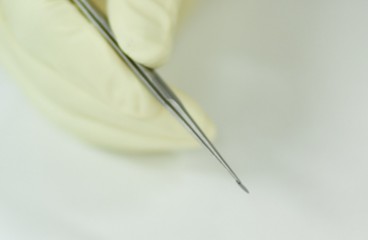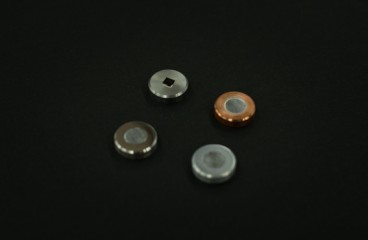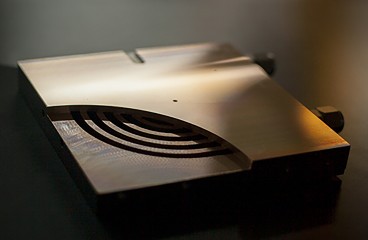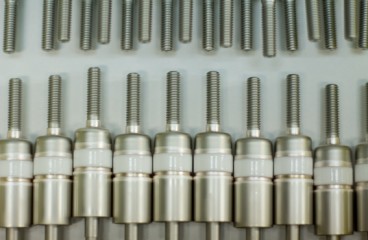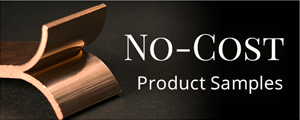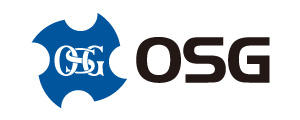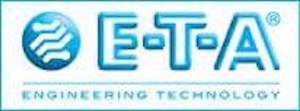Manufacturing of electronic components
Kawaso Texcel Co. Ltd. View Company Info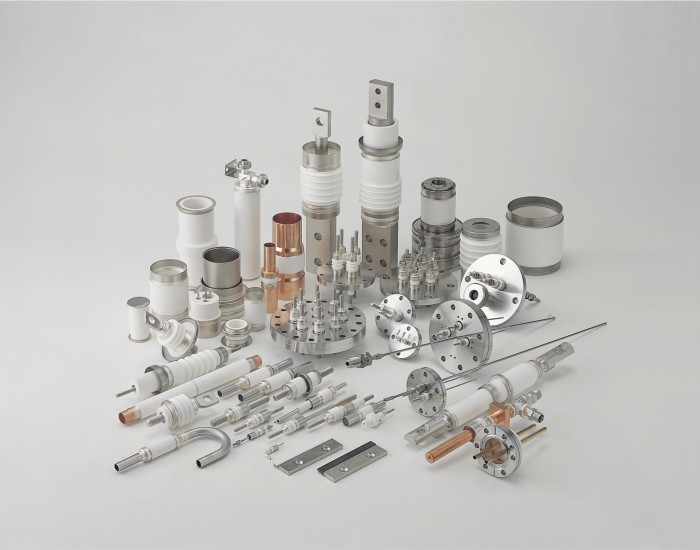 Metailizing Products
Metailizing Products
From infrastructure, to semiconductors, nuclear, medical care, to the space industry, there is an increasing demand for jointing products made from metals and ceramics. Kawaso Texcel Co. Ltd., with its advanced technological capabilities with regard to strong, air-tight jointing of metal-on-metal and metal-on-ceramic, has an excellent reputation as one of Japan’s leading specialist manufacturers of air-lock strips using a wide variety of metals and ceramics materials.
Leap from Pottery Manufacturing
Kawaso started as a manufacturer of pottery in 1877 in Seto City, Aichi prefecture, which at that time was a major production area for pottery. Utilizing 130 years of know-how unique to the pottery industry, the company has innovated its technology in line with changes of the times, producing insulators for electricity, equipment for electric power production, and to industrial ceramic products.
“How can we make products that no other company can make?” That is how President Inatsuki explains the expansion of the company’s business into different areas. The company’s leap to success which started during the 1980’s was due to the development of its own metallization technology of joining ceramic and metal, and its use of water-cooled resistors.
To Make Products that cannot Be made In Any Other Place but Here
Because of the differences in crystal structure, bonding between metals and ceramics is very difficult. To join them, the surface of the ceramic is metallized, so the bonding process is changed to metal-on-metal. The process of metallizing the surface of the ceramic is called metallization, after application of a metal paste on the surface of the ceramic, the ceramic is heated to a high temperature to form a solid metal layer. This process can lead easily to cracks in the ceramics due differences in expansion rates of metal and ceramics, and is very difficult procedure such that only a few companies in Japan do it.
One day, there was a company that asked Kawaso for advice, “After using for only a short period of time, there is a water leak coming from the joined surface of the insulating pipe that was made by another company.” In general, Kawaso’s competitors use molybdenum-manganese metallic paste in the metallization process (molybdenum-manganese process); however molybdenum dissolves in water, so when the product is exposed to water it loses its water-tightness property after some time. Kawaso has developed in-house its own metallic paste containing titanium (melted titanium method) and used that to solve the problem of the above client. In particular, when the bonded area is exposed to water, the titanium metallic paste was highly valued for its air-tightness, heat resistance and long-term reliability, and enabled the company to expand its business.
Pursuit of Brazing Technique
As well as bonding between metal and ceramics, the company has an established reputation in the brazing technique of bonding dissimilar metals. In particular, for X-ray transmission windows that are used as non-destructive testing equipment, the window portion requires a thin film of beryllium, however since the required thinness can make the beryllium film fragile, a high level of brazing technique is required. In Japan, only Kawaso possesses the brazing technology to join different metals that can make a beryllium window up to 8 microns thin, and has provided this solution to domestic and overseas manufacturers of X-ray transmission equipment. This kind of difficult bonding technique is a result of countless verification of bonding quality, based on bonding interface analysis and extraction of materials used for brazing technique. Through this, the company can know how the materials are bonded and ensure that the production is proceeding according to plan.
Deliver value-added work
“Unless the value of the company is recognized, it is inevitable that we will be lured into a price war, which is impossible to break away from easily. So how do we create value in the company? We make value-added products,” says President Inatsuki. One of the things that embodies this philosophy which has made the company unique is the development and production of the heat sink.
The manufacturing of the heat sink used for cooling semiconductors is based on the design of the client. However, would the design really yield optimal cooling? To confirm the performance of the required design, the company has set up a “Heat Sink Laboratory” that simulates an environment similar to the conditions during actual use of the product. In this simulation, it is possible to visualize the flow of the refrigerant, and also to test and quantify temperature, thermal resistance, and pressure loss. With this, the company can determine the most appropriate material and size of the heat sink, and the optimal flow path of the refrigerant. This makes it is possible to design and develop the optimal heat sink that satisfies the needs of the client.
“We want to cool by this much this volume of heat, etc. From these kinds of requests from our clients we will design and make a prototype of a heat sink, and do the necessary adjustments with the client in attendance, before making the final product. Instead of making a product just based on the design that was given, we make products with the required specifications that is worth the company’s brand. That is the value of the company,” says President Inatsuki.
Seeking New Possibilities
“Kawaso competes using our reliability and technical capabilities that only our company can provide. This conviction will not change even if the company competes against the world. What are the needs of equipment manufacturers in Europe and North America? How can we satisfy those needs? I want to know how far Kawaso’s products can go.” says President Inatsuki. The company hopes to create value through business partnerships not only in Japan but also overseas.
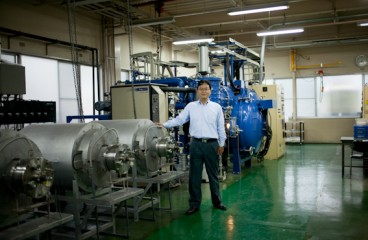
Kawaso Texcel Co. Ltd.
Business Description : Manufacturing of electronic components
HeadquatersAddress: 1-7-10, Nishi Honmachi, Nishi-ku, Osaka-city, Osaka, 550-0005 Japan
President: Yoshiaki Inatsuki
Founded: 1877
Number of Employees: 100
Website: www.kawaso-texcel.co.jp/english/english_index.htm


